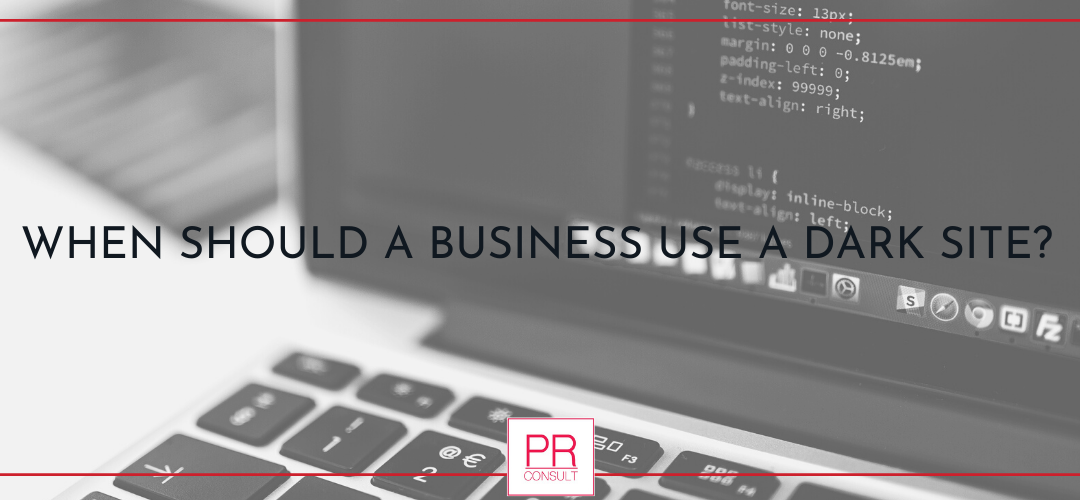The parent company of Fast Company and Inc. responded to a system breach a few weeks ago whereby hackers sent racist and inappropriately sexual push notifications to Apple News users. The company quickly made their standby Dark Site their active landing page to let their audiences know they were aware of and investigating the incident.
As PR Consult has stated time and time again, a crisis is a matter of when not if for companies. It can hit a company at any time, and usually not during office hours! So, it is important companies are prepared to respond in a number of ways.
Fast Company’s associated websites are now running normally but their initial response is a great example of what a company needs to have available to help protect itself, its customers and its reputation during a crisis.
Why is a Dark Site necessary?

A dark site is left invisible until it is needed, and usually contains a statement about why the site is unavailable. It is an important component of a crisis communications response plan and every company should ensure that they have one available to go live as quickly as possible when the need arrives.
A Dark Site prevents data, that may have been breached, from being accessed and ceases all automated activity associated with the site. It’s a safety precaution that gives the company time to access the situation and prevent further damage to their customers accessing their site.
What content should I include on my Dark Site?
A Dark Site will usually contain a statement to help audiences understand that the company acknowledges that there was a problem and then explains what it has done, or plans to do to address it. This message can be updated as needed, and/or provide links to external sites or channels where their audiences can get additional information. It should be short and considered a holding statement so people understand the issue and aren’t left wondering what the heck happened.
This statement allows you to share your narrative, communicate your key messages and, ideally, stay ahead of the story. In times of crisis you want to protect your company’s reputation as much as possible and going dark is sometimes the best way to do that.
When shouldn’t I go Dark?
Making your website dark at the sign of any and all trouble is not recommended. It is something you would normally do when the site has been breached and customer data could have gotten into the wrong hands. Your website is a glimpse into your company and a way to communicate what you want people to know, so it might even make sense for you to stay live if customer data hasn’t been compromised.
If you do decide to go dark, you want to do it for the shortest amount of time possible. Fast Company went dark for a total of eight (8) days, Inc.’s site only a few days, but they still managed to share content through their social media channels. The team adjusted to how it normally created and shared content so business was able to continue. If your website is your key revenue source, or you have advertisers/sponsors that expect a certain level of exposure, you definitely need to review the pros and cons of going dark.

Overall, your crisis communications response needs to be at every level of the organization – not just your website. Your company needs to ensure it responds accurately, quickly and transparently with all stakeholders, from internal teams to customers to journalists. You want to help protect your reputation at every level to minimize any damage a crisis can cause.
If you need support with your crisis communications response, please feel free to reach out to PR Consult. We can look at what you already have in place, make recommendations and create content where you need.

